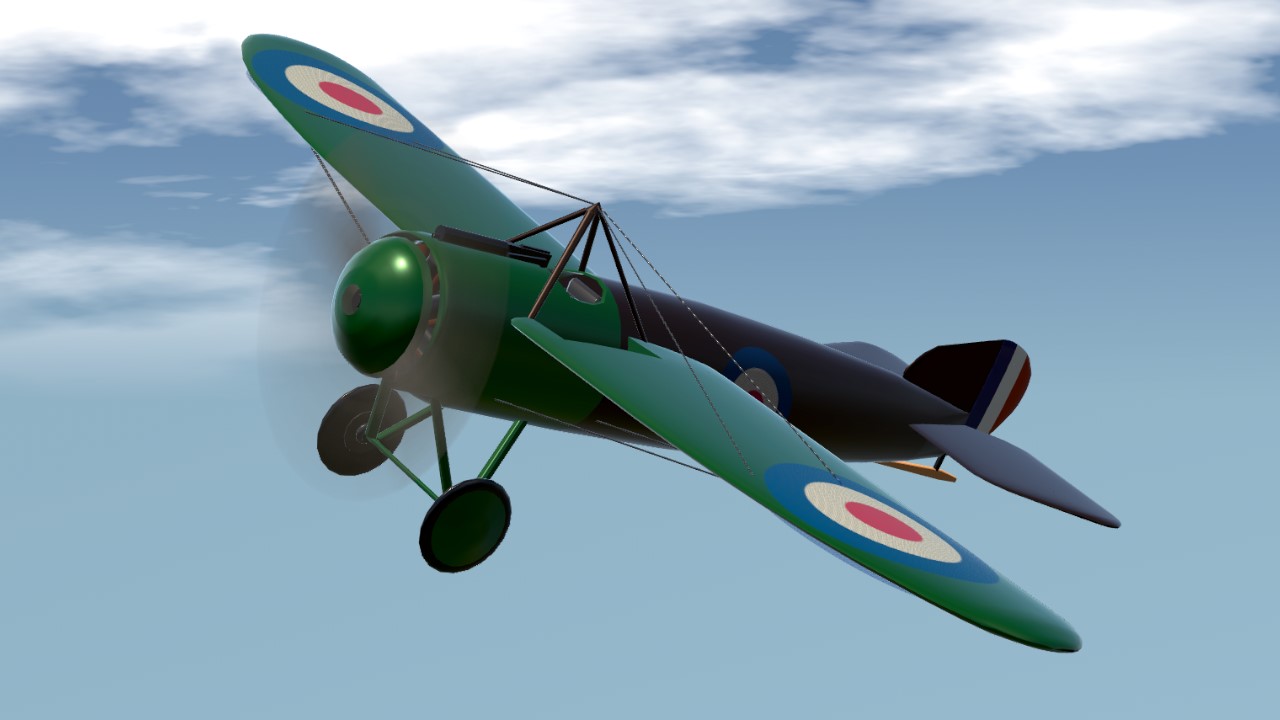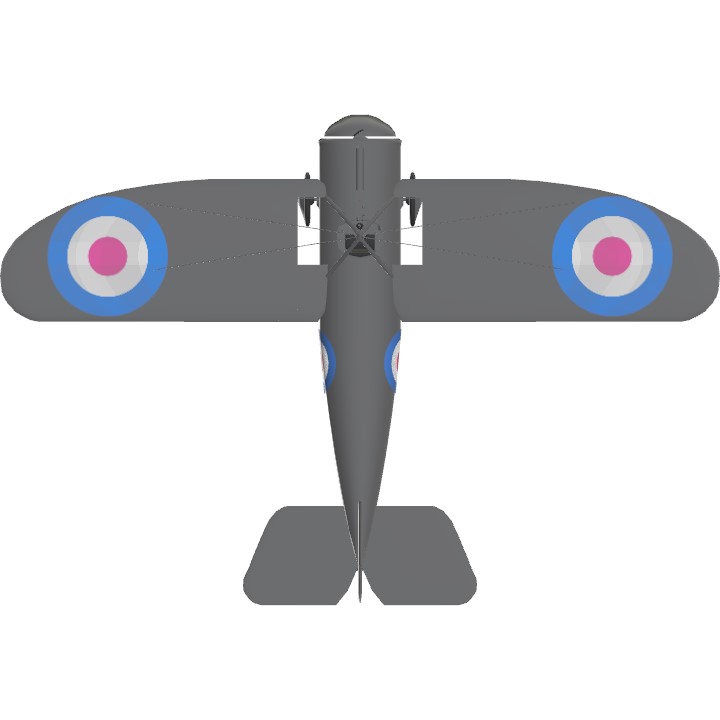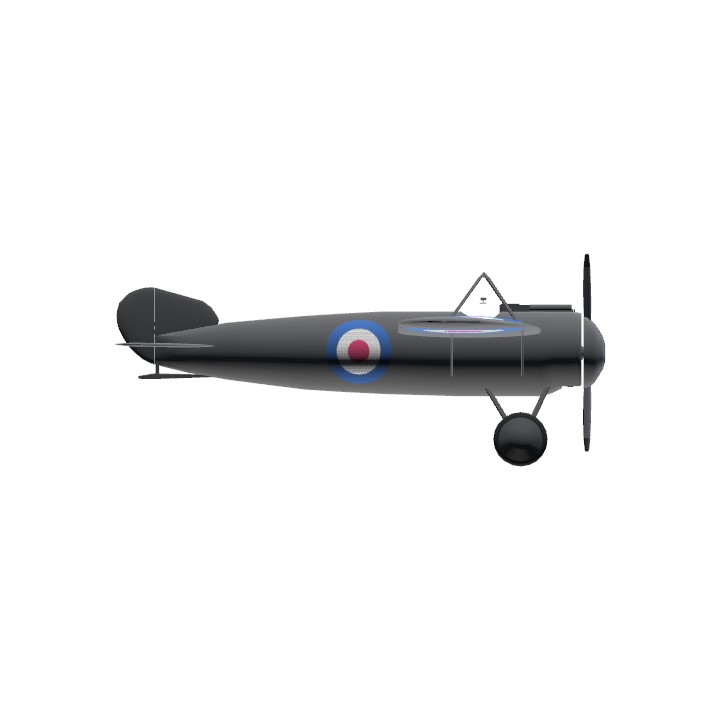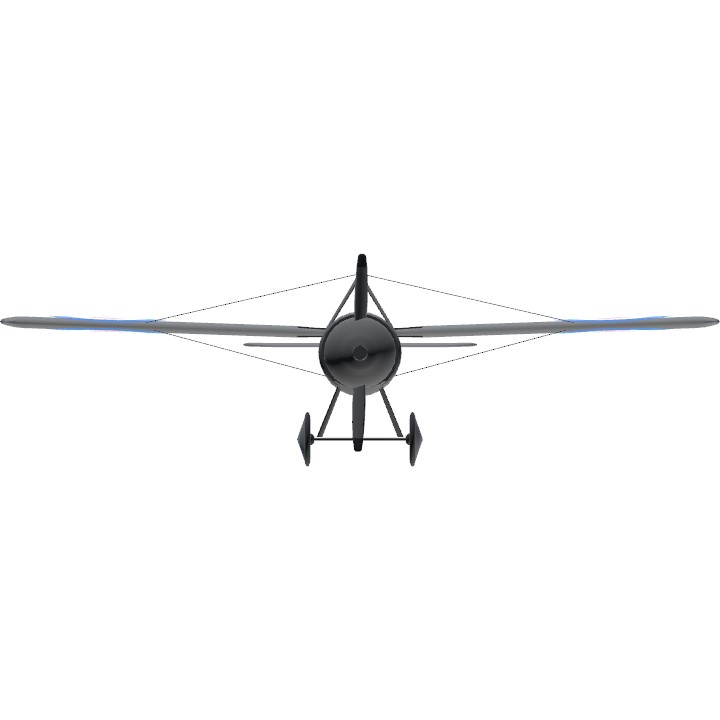First of all, thank you all for getting me to 10k.
Second of all, yeah, this did come out of nowhere.
Third of all, introducing my first excellent scratch replica!
This should work for VR
The Bristol M.1 Monoplane Scout was a British monoplane fighter of the First World War. It holds the distinction of being the only British monoplane fighter to reach production during the conflict.
During mid-1916, work commenced at Bristol on a new fighter aircraft as a private venture, headed by aeronautical engineer Frank Barnwell. The design was more radical than contemporary aircraft such as Airco's DH.5, which had a backward staggered biplane configuration. It featured a depth spinner on the propller to reduce drag and a carefully streamlined circular cross-section fuselage built using conventional wood and fabric construction techniques to minimise manufacturing difficulty. On 14 July 1916, the first prototype, designated as the M.1A, conducted its maiden flight, flown by F.P. Raynham. During testing, the type quickly demonstrated its capabilities as a high speed aircraft for the era, possessing a maximum speed that was some 30–50 mph (48–80 km/h) higher than any of the contemporary German Fokker Eindecker and French Morane-Saulnier N monoplanes.
Despite its promise, only 130 aircraft were constructed. This was largely due to an institutional mistrust of the monoplane platform held by the British War Office and many pilots of the Royal Flying Corps (RFC) at that time, believing it to be accident-prone and inferior to the more common biplane configuration used by many of the M.1's contemporaries. As a consequence of the type being believed to possess too great a landing speed to be safely handled by the constrained French airfields on the Western Front, the M.1 was commonly deployed to the Middle East and the Balkans theatres instead. A single ace pilot, Captain Frederick Dudley Travers DFC of No. 150 Squadron RAF, flew the type, having successfully shot down several opponents. During December 1918, Lt. Dagoberto Godoy of the Servicio de Aviación Militar de Chile, flew from Santiago to Mendoza, Argentina, a feat which was recorded as being the first flight conducted across the Andes mountain chain.
The M.1 also possessed maneuverability and high visibility. Cutouts in the wings allowed the pilot to see downward.
The M.1A was the original model equipped with a Clerget 9Z 110 horspower rotary engine. The M.1B was an evaluation model. The M.1C was the production model, carrying a single 7.7 mm Vickers synchronised machine gun and used a Le Rhône 9Ja rotary with equal horsepower to the M.1A's Clerget.
Ok, enough of my blathering. This is about 90% scratch made by me. The cockpit is...kinda accurate since there wasn't really much in it anyway. If you don't believe me, look it up. There is a button on the side of the gun allowing VR users to fire it. This has semi-realistic performance and has almost perfectly accurate shape, exact horsepower and almost accurate weight. It flies at 130 mph (about 210.6 kph) using a speed limiter! Sorry about the roundels clipping through the wings, I couldn't do anything about them.
This has a working rotary engine. It has two speeds, max, and zero. This replicates a "blip switch" used on early aircraft.
Credit to SSEntwicklungsstelleIV for the roundels, MrPanzer for the 9 cylinder rotary engine, Tookan for the Vickers machine gun, and Random04 for the airbrake code.
The rotary engine jerks when starting up and powering down. On landing, you must cycle powering up and powering down the engine. To avoid crashing on landing, roll against the jerks.
I hope you enjoy!
Specifications
Spotlights
- SuperSuperTheSylph one month ago
General Characteristics
- Predecessor Early Aviation Challenge
- Created On Windows
- Wingspan 30.4ft (9.3m)
- Length 20.7ft (6.3m)
- Height 9.0ft (2.7m)
- Empty Weight N/A
- Loaded Weight 1,385lbs (628kg)
Performance
- Horse Power/Weight Ratio 0.079
- Wing Loading 4.3lbs/ft2 (21.2kg/m2)
- Wing Area 319.2ft2 (29.7m2)
- Drag Points 698
Parts
- Number of Parts 314
- Control Surfaces 9
- Performance Cost 993





looks likes fockker e.3.
locks beauty.
Congrats 🎉🎉
Congrats
4th
Third?
Second!
First!